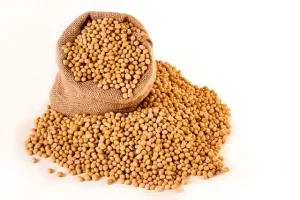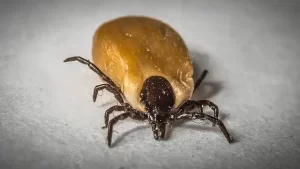How Lung cancer patients eat heathy?
- Engineered Soybeans with Pig Protein: A Promising Alternative or Pandora’s Dish?
- Severe Fever with Thrombocytopenia Syndrome (SFTS): A Tick-Borne Threat with High Mortality
- Why Isolating Bananas Extends Their Shelf Life?
- This common vitamin benefits the brain and prevents cognitive decline
- New report reveals Nestlé adding sugar to infant formula sold in poor countries
- Did Cloud Seeding Unleash a Deluge in Dubai?
How Lung cancer patients eat heathy?
How Lung cancer patients eat heathy? It turns out that the most important vegetable for lung cancer patients is it! The occurrence of lung cancer is closely related to lifestyle, and diet is also the key to it.
Studies have shown that lung cancer is closely related to environmental factors and lifestyle. Epidemiology found that eating more fruits and vegetables can prevent lung cancer. Vegetables and fruits are rich in phytochemicals, such as isothiocyanates, indoles, and flavonoids. These phytochemicals inhibit tumor cell proliferation, induce tumor cell apoptosis, and reduce the risk of lung cancer by regulating pathways related to anti-tumor.

Cruciferous vegetables are common foods on our table. In addition to being delicious, they also have a strong anti-cancer effect. Studies have shown that the total intake of fruits and vegetables (especially cruciferous and yellow or orange fruits and vegetables) is more than less, and the risk of lung cancer is significantly reduced by 32%.
▌How do cruciferous vegetables fight cancer?
Speaking of cruciferous vegetables’ anti-cancer, we have to mention its two main anti-cancer armies, one is called isothiocyanate and the other is called carotenoid. Each soldier in these two teams has magical abilities. Let’s take a look at these two teams.
01. Anti-cancer team one-isothiocyanate
Studies have shown that isothiocyanate can effectively inhibit the growth of ovarian cancer cells OVCAR-3 (prone to form poorly differentiated serous adenocarcinoma), and the inhibition rate increases with the increase of drug concentration. The army of isothiocyanate can knock down the growth of such ovarian cancer cells, preventing them from growing or even disappearing.
Gynecologic Oncology has published that hexane isothiocyanate (7Me-IEITC) can selectively reduce the cycle arrest of ovarian cancer cells SKOV-3 cells (easy to form clear cell carcinoma) in G2/M phase (make cancer cells) Inability to undergo mitosis and stop the proliferation of cancer cells).
After talking about the strengths of this team, let’s take stock of its two generals, called sulforaphane and myrosinase.
① Sulforaphane
Sulforaphane is also called “Raphanin”, which is a kind of isothiocyanate.
Sulforaphane has a strong effect of promoting the detoxification of carcinogens and inhibiting the growth of cancer cells. It can play a role in the pre-cancer, middle and spreading stages. It is the natural active ingredient with the strongest anti-cancer activity found in vegetables so far.
The currently widely accepted explanation is that isothiocyanates are involved in the metabolism of carcinogens, and sulforaphane acts through the metabolic regulation mechanism of carcinogens.
As the name suggests, carcinogens can cause cells to become malignant. Most human tumors are formed by contact with carcinogens from the outside world. They are like drugs that make the body’s original healthy cells go astray. In popular terms, they are “long crooked”. These “crooked” cells slowly get worse and worse, and they grow into the cancer cells we talk about.
Our brave and witty sulforaphane allowed these “long crooked” cells to be taught and broken back into the right path.
② Myrosinase
Myrosinase is asleep in normal health, but physical damage is a wake-up call for them. They are distributed in various places and can promote isothiocyanates, thiocyanates, nitriles and other substances after being awakened, and prevent the invasion of the carcinogenic factors we mentioned above.
02. Anti-cancer team two-carotenoids
There are many members in this team of carotenoids. They include β-carotene, lutein, lycopene, zeatin…
If isothiocyanate is used to fight cancer by injuring the enemy, then carotenoids are used to repair themselves and strengthen our army.
Scientists at the University of Hawaii found that carotenoids can enhance the transmission of information between cells, and can stop the growth of cancer cells by restoring the connection between cells, effectively preventing the expansion of cancer cells.
Carotenoids are like signal soldiers, allowing the scattered troops around the body to be connected, consolidating our military’s ties, ensuring our military’s command and the completion of various tasks, and gradually isolating cancer cells in the body. After being scattered, they were broken one by one.
▌How much do you know about Cruciferae?
Since cruciferous vegetables can effectively inhibit the growth of lung cancer cells, how much do you know about cruciferous? Which cruciferous vegetables can we choose?
Cruciferae, as the name implies, the flowers have four petals, which are symmetrical in the center of the cross, with four strong stamens, four long and two short. The following is a simple classification of Cruciferae:
Cabbage vegetables include Chinese cabbage, pakchoi, Shanghai green, Zhutong green and so on.
Root vegetables include white radish and cherry radish, but carrots are plants in the Umbelliferae family, not cruciferous.
Mustard vegetables include common mustard greens, Chinese cabbage, potherb mustard greens, and root mustard greens.
There are various types of cabbage vegetables, and their edible parts can be divided into cabbage (for leaves), Chinese kale (for stems), kohlrabi (bulbs), cauliflower and broccoli.
Certain Chinese medicinal materials also belong to the cruciferous family, such as Radix Isatidis and Radish Scutellaria (the seeds of radish).
In fact, the isothiocyanic acid in cruciferous vegetables has no anti-cancer activity, but after cooking, after the human body chews and digests, the cells of the vegetables are destroyed and under the action of certain enzymes, an active anti-cancer substance is formed .
Someone did an experiment, eating broccoli raw, its nutrients are difficult to release, which is not good for digestion and absorption. If you blindly throw broccoli in water and boil it for 30 minutes, the anti-cancer component glucosinolates of broccoli will be lost as much as 77%, but heating broccoli to 60°C will achieve the best anti-cancer effect.
The loss of broccoli by steaming is very small, the loss is not large within 3 minutes of microwave steaming, and the loss within 5 minutes of oil frying is also very small. Therefore, the correct way of cooking can ensure that our consumption of cruciferous will bring anti-cancer effects.
▌How to eat cruciferous?
1. You don’t need to soak for too long when washing to avoid cell damage. Start cooking immediately after cutting.
2. If you eat broccoli raw, you must chew it carefully to let the anti-cancer substances fully release and facilitate absorption.
3. If cooking, heat it until it is dead, and immediately take it out of the pot to maintain the tenderness and crispness of the vegetables while reaching the highest state of anti-cancer substances.
4. The method of steaming and frying can preserve more anti-cancer substances than boiling.
5. If you are worried about pesticide residues, you can quickly blanch it in boiling water before proceeding to the next step of cooking.
▌Orange fruits and vegetables
In addition to the cruciferous family, another type of food-orange fruits and vegetables is also involved in this study.
Can eating oranges fight cancer?
Yes, but not entirely. According to the nutritional recommendations for patients issued by the National Comprehensive Cancer Network (NCCN), plant-based foods can affect the recurrence of cancer.
Orange fruits and vegetables, such as oranges, lemons, oranges, and grapefruits, contain anti-inflammatory flavonoids in their skins and fruits. Flavonoids can induce apoptosis of cancer cells and tumor cells and exert anti-cancer and anti-tumor effects. The apoptosis of tissue cells is delayed.
In addition, it is also rich in β-carotene, lycopene, and vitamin A/C/E, which can reduce harmful molecules in the body, thereby delaying aging and fighting diseases.
Of course, patients with lung cancer cannot eat cruciferous vegetables and orange fruits and vegetables alone. In their daily diet, they must pay attention to scientific and reasonable collocation and maintain a balanced nutrition.
The National Comprehensive Cancer Network recommends the best diet menu for cancer patients:
① Eat more fruits and vegetables every day
② Eat more grains, choose high-fiber foods, and choose less fine foods
③Low-fat, try to choose low-fat milk, low-fat yogurt
④ Choose high-quality protein, eat less red meat, and eat less processed foods, such as pickled foods
⑤There are many types of food, it is recommended to 1/2 vegetable, 1/4 high-quality protein, 1/4 grain every day
⑥Low-fat fish, such as deep-sea fish such as salmon and sardines, can be eaten twice a week
⑦Don’t eat dietary supplements and health products at will
Fruits and vegetables have always been an important part of our lung cancer diet and an important part of our balanced and nutritious diet.
This study tells us that the natural anti-cancer guardians in fruits and vegetables-cruciferous and orange fruits and vegetables help us better fight cancer. Therefore, friends with patients should make good use of it.
(source:internet, reference only)
Disclaimer of medicaltrend.org



